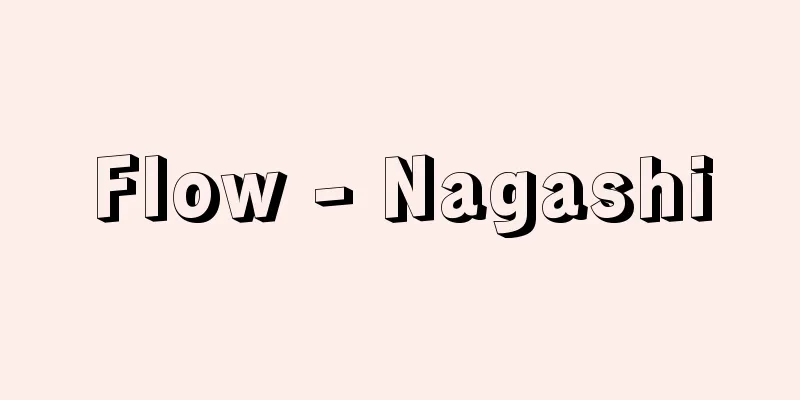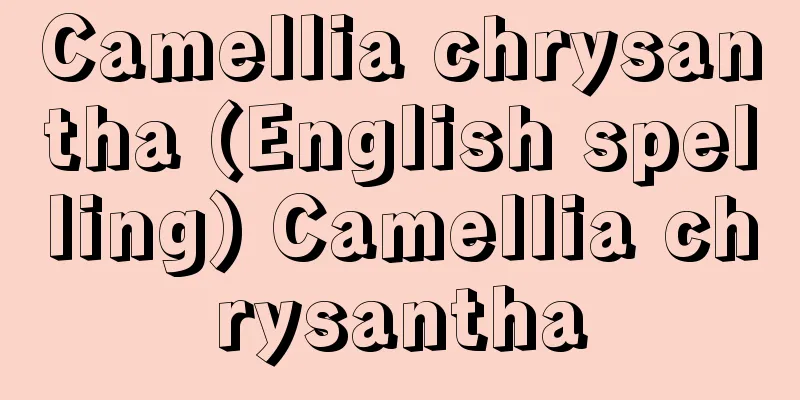Flow - Nagashi

|
A term in Japanese music. Its meaning varies depending on the genre. (1) A style of singing in Buddhist vocal music, chanting the end of a melody with emphasis. (2) A style of shamisen playing. A style in which the same note at the end of a melody is played successively at gradually faster speeds, sometimes slowing down a little at the end, and the strength gradually weakens. Simply playing faster and faster is called "kizamu," and the style where the open strings are used at the end of a paragraph to separate the previous melody is also called "otoshi." This mainly applies to shamisen in Nagauta and Bungo-style Joruri, and in Gidayu shamisen there is a more specific style name such as "Yuri Nagashi." (3) A style of playing the koto. (a) A style similar to (2), but in Yamada-ryu koto music, all are called "otoshi" or "kizamu." (b) An abbreviation of "Nagashi Tsume." With a prosthetic nail worn on the right thumb, the hiragana and tame strings are plucked almost simultaneously, and then the intermediate strings are played quickly (often omitted) until the designated string is reached. This is known as "karararin." (4) A percussion technique used in Noh and Kabuki musical accompaniment. The same type of strikes are struck in succession. The strikes get gradually stronger and faster. (5) The name of a Kabuki musical accompaniment. It is used to mark the entrances and exits of characters in historical and rough plays. (6) The melody of the Chikuzen biwa. A general term for the most elegant and emotional melodies. There are further subdivisions. (7) Playing the Fuke shakuhachi while walking when begging for alms. (8) An entertainer walking through the streets while playing an instrument. It particularly refers to the practice of Shinnai-bushi performers, as part of their training, walking around playing shamisen melodies called "nagashi," which were arrangements of original Shinnai songs, especially on two shamisen, and when invited into a tatami room, reciting Joruri. By extension, it has come to mean all door-to-door entertainers who walk around the streets performing, and enka performers who carry accordions or guitars and travel around bars singing popular songs and receiving gifts. Source: Encyclopaedia Britannica Concise Encyclopedia About Encyclopaedia Britannica Concise Encyclopedia Information |
|
日本音楽の用語。種目によって意味が異なる。 (1) 仏教声楽の声明の唱法。旋律の終りを強く唱える。 (2) 三味線の奏法類型。旋律の最後の同一音を次第に早めて連続的に弾く奏法の一つで,最後に少し遅くすることもあり,強さは次第に弱まる。なお,単に次第に早めて弾くことは「キザム」といい,特に段落の終りでその前の旋律と区切って開放弦で行う類型は「オトシ」ともいう。おもに長唄や豊後系浄瑠璃の三味線でいい,義太夫三味線では「ユリナガシ」などのさらに限定された奏法名称がある。 (3) 箏の奏法。 (a) (2) と同様な奏法類型をいうが,山田流箏曲ではすべて「オトシ」または「キザム」という。 (b) 「流し爪」の略称。右手の親指にはめた義爪で,巾,為弦をほぼ同時に弾き,そのまま途中の弦を急速に経過 (省略することが多い) して指定の弦にいたる。いわゆる「カーラリン」。 (4) 能,歌舞伎などの囃子の打楽器の奏法。同種の打音を連続して打つ。打つに従って次第に強く早くなる。 (5) 歌舞伎囃子の曲名。時代物,荒事の人物の出入りに用いられる。 (6) 筑前琵琶の旋律。最も優美な情緒的な旋律の総称。さらに細分された名称がある。 (7) 普化尺八で托鉢のとき,歩きながら吹奏すること。 (8) 芸人が街頭を演奏しながら歩くこと。特に新内節の演奏家が修業の一つとして,本来の新内曲から編曲した「ナガシ」と称する三味線だけの旋律を,特に2丁の三味線で演奏しながら歩き,座敷に招かれてから浄瑠璃を語ったことをいう。転じて,街頭を演奏しながら歩く門付芸人全般をいい,アコーディオン,ギターなどを持って,酒場などで流行歌などを歌って祝儀をもらって歩く演歌師などをいうようになった。
出典 ブリタニカ国際大百科事典 小項目事典ブリタニカ国際大百科事典 小項目事典について 情報 |
Recommend
sweet spire
... There are about 10 species of Itea distribute...
military engineering
…In the past, engineering only meant military eng...
Nishikawa Kojiro
1876-1940 A socialist in the Meiji period. Born o...
chromaticism
…The chromatic scale has a long history, and was ...
Toji Temple
This temple is located in Kujo-cho, Minami-ku, Ky...
Gilbert-Lecomte, R.
…Born in the Ardennes. While attending a lycée in...
Hasama - Hasama
The former name of a town (Sakocho) in Tome Count...
Case (law) - Kaku
…The decisive factor in the transition from the H...
Ribes japonicum (English name) Ribes japonicum
… [Matsui Jin]. … *Some of the terminology that m...
Calico (cotton fabric) - Calico
…A type of plain-woven cotton fabric. A colloquia...
Mount Kata-ga-take
Please see the "Kasagatake" page. Sourc...
Instrumental analysis
A general term for analytical methods characteriz...
madina (English spelling)
…Even today, when new European-style towns have d...
Kron, G. (English spelling) KronG
... Although there are some records of performanc...
Nagasaki Takasuke
Year of death: 2nd year of Shokei/3rd year of Genk...
![North Brabant [province]](/upload/images/67d04da731cd0.webp)





![Trasimeno [Lake] - Trasimeno](/upload/images/67cc5cc1d751b.webp)


